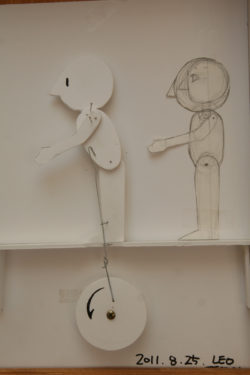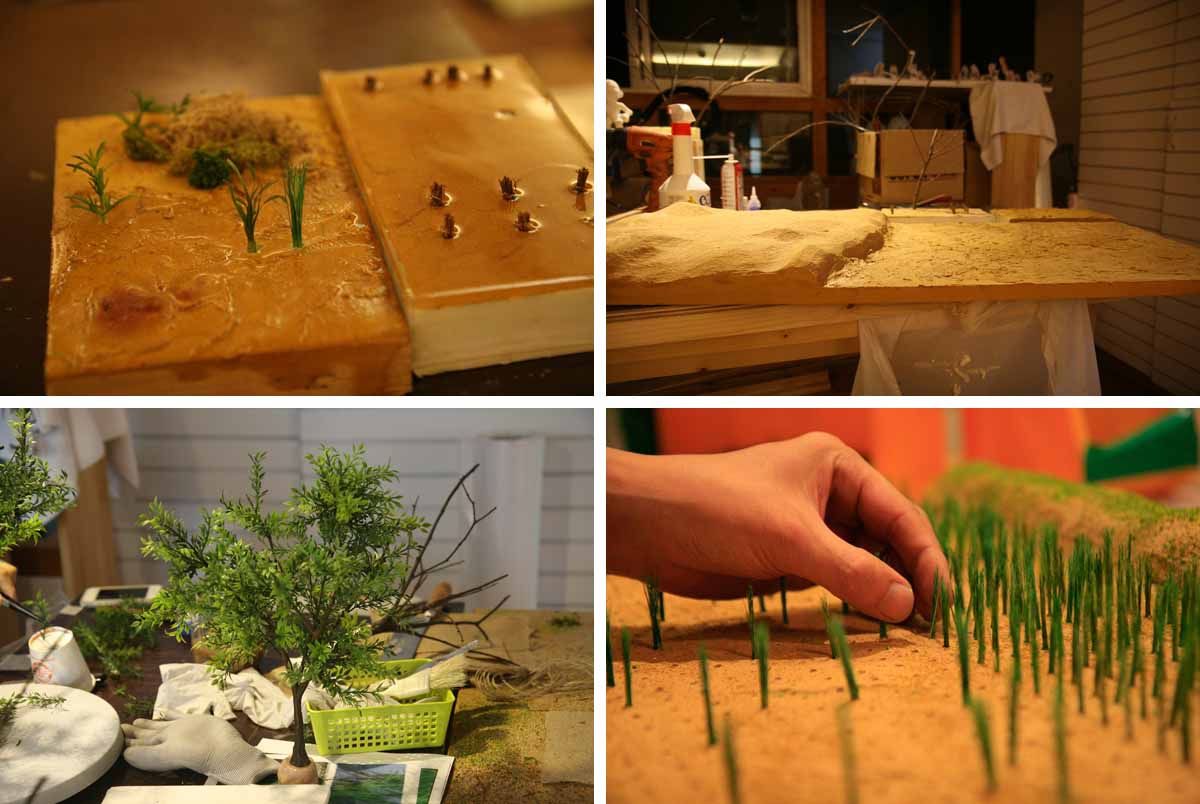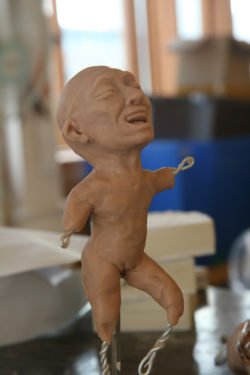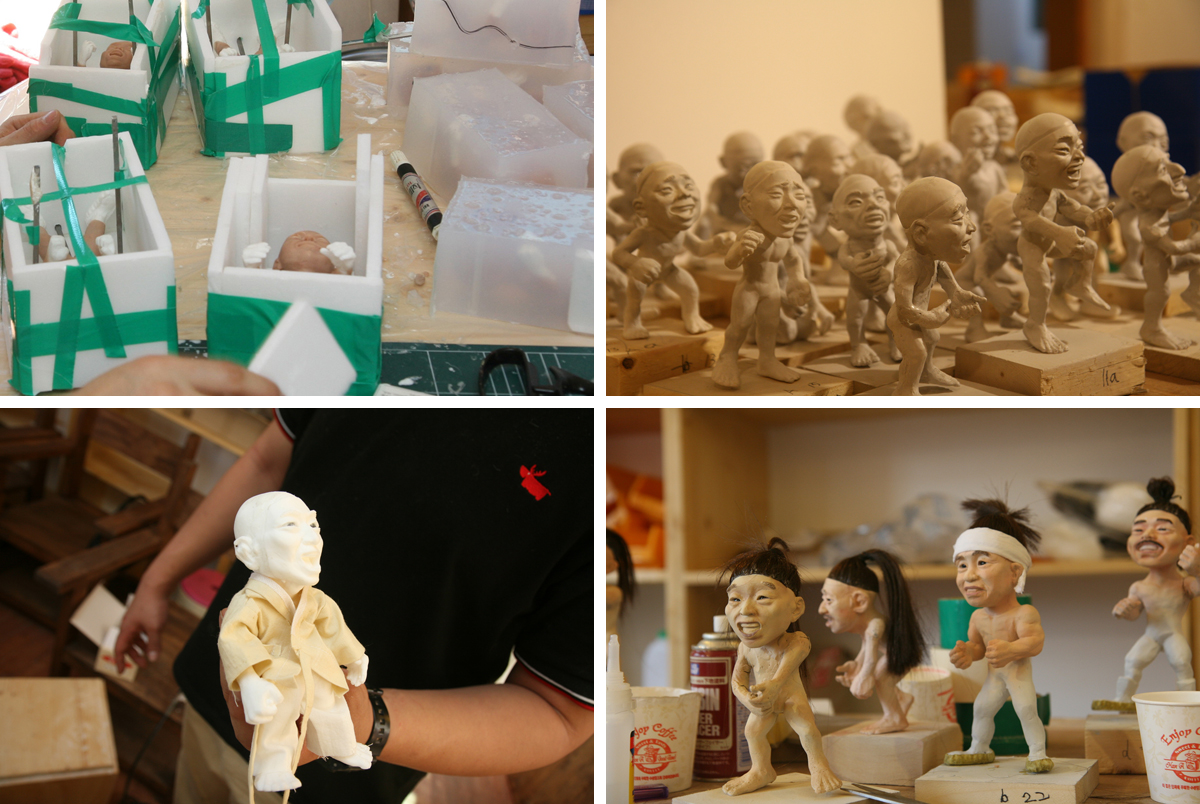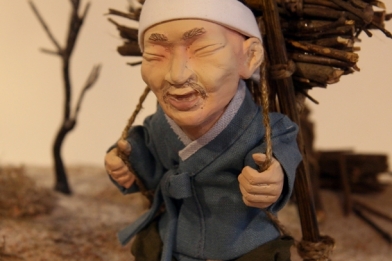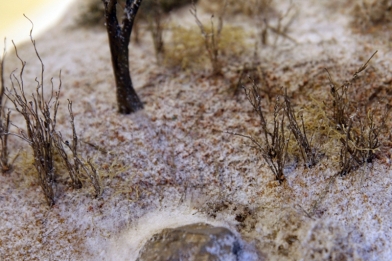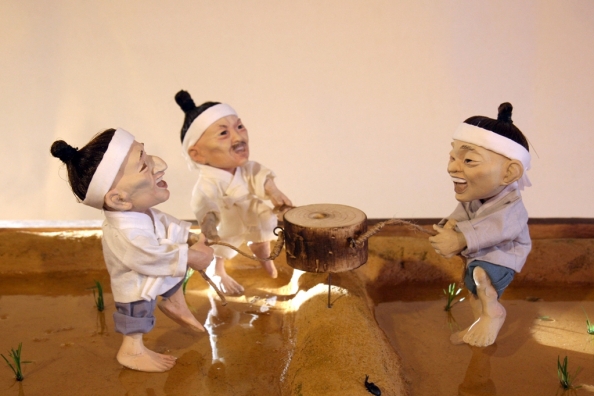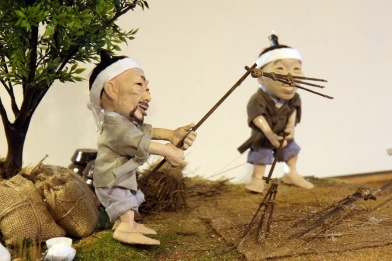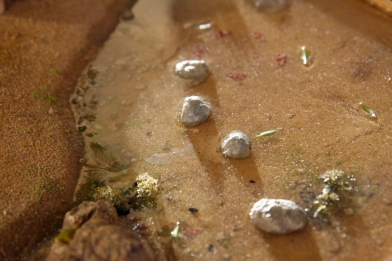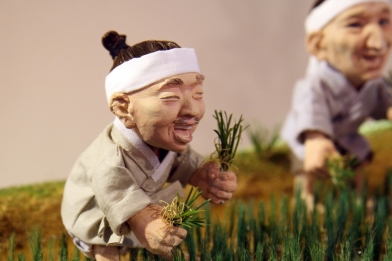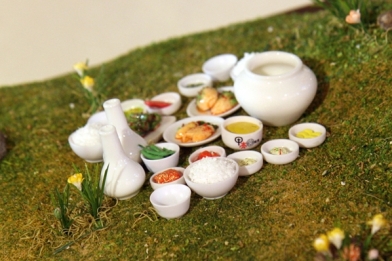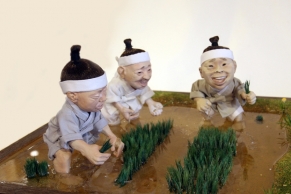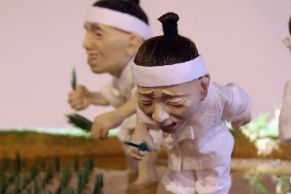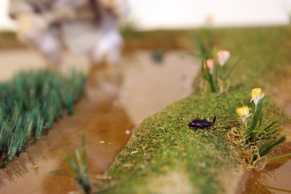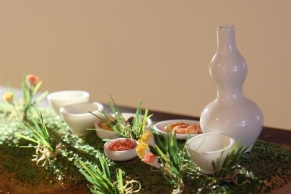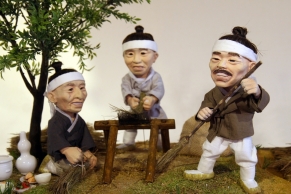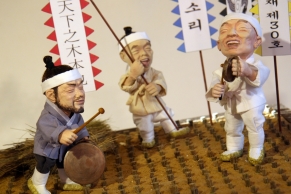[The voice of the farmers Museum]
Geochang-eup, Geochang-gun, Gyeongsangnam-do, Republic of Korea
Diorama design and production in museum
commissioned by the Geochang County Office / 2011
each size: h 300X w 900X l 380mm
wood and mixed media
This exhibit hall was made to preserve traditional Korean culture about agriculture. Below work shows a process of a diorama, with using motors and sound devices. Each step needed several tests not only to express characters’ natural poses and movements but also show scenery of agricultural society in the past with nature.
Moving Parts
The principle of the working model is to convert the rotational motion into a linear motion and the linear motion into a linear motion in another direction. The necessary devices consist of a motor, timer, button, and motor intensity regulator. I tested a simple principle with styrofoam board. I made the essential devices as a result. And it is applied to the real object and adjusts the rotation intensity and time of the timer and the motor. Finally, we connected the exhibition hall and set up the sound and operation time.
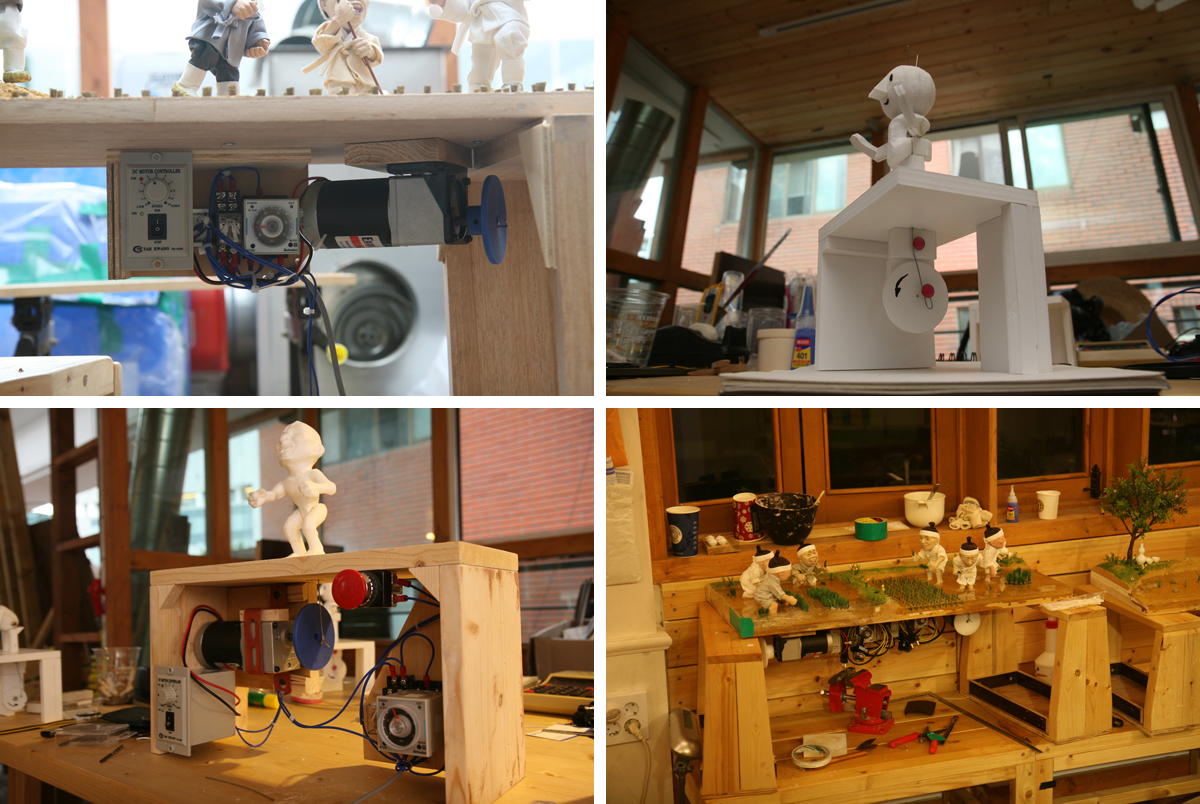
Diorama Landscape
In the production of the terrain of the work, I tried to simulate the characters of the styrofoam board. I made the ground by grasping the position and movement of the characters. And I tested the materials to express water.
Modeling the Figures
Props of all backgrounds and characters of the characters were made to fit the size. We shaped the costume figures to make silicone molds and cast non-foam rigid urethane. To give them an overall feeling of liveliness as well as details of when the audience looked closer, the eyes of the characters were all made of glass eyes, and the head was made of wigs.
[ The Finished Diorama ]
Eosan-yeong sound
It shows that farmers make a sound as they prepare for the firewood in the mountains or fields.
Mosdugdajigi sound
Describing doing dike work to supply water to rice fields. It is the sound that a lot of people call up when they lift up a dam, and a lot of people sing together.
Barley threshing sound
It demonstrates threshing barley. Because the work is hard, the music is short, and the primary meaning of the song is an expectation of work and hopeful life.
Mojjigi sound
This piece shows farmers singing while rice is grown on the plate before rice is planted.
Monaegi Sound and Nonmaegi Sound
It is a diorama of two sounds. The first is farmers planting rice with making a sound. The second is a scene of singing while weeding a rice paddy.
Byeotajag sound
It shows farmers singing the sounds they call as they harvest rice.
Design a plan
